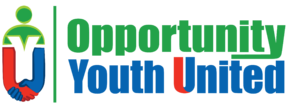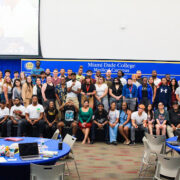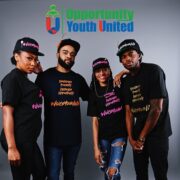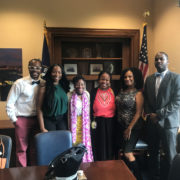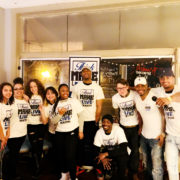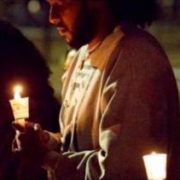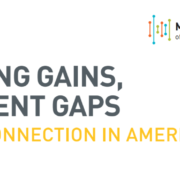Voting Rights: We Marched, and We are Still Pushing
/in Featured Articles, Media Coverage, OYU in Action /by TimekaWe Voted, What Now?
/in Featured Articles, Media Coverage, Newsletter, OYU in Action /by Shaquana Boykin
“We Voted, What Now?”
Your Voices Matters. OYUnited members mobilized, GOTV, and [YOU]th Voted. During a pandemic and the largest estimate of “growing voters”, people turning 18, compared to this past General Election, according to CIRCLE, the Center for Information and Research on Civic Learning & Engagement, is close to 15 million new voters. So what impact did our OYUnited members have? Read more
Take a look at several OYUnited members mobilizing in their communities before and after General Elections 2020
Atlanta, Georgia
We Voted
You[th] Voted, OYUnited Leaders Shanice Turner and Daniel Rosebud have been participating in non-partisan Get Out The Vote events in Atlanta. Shanice and Daniel are Carolina Voter Mobilization Grantees, who applied for this grant through OYUnited and are individuals working on voter mobilization in their prospective Communities since October 2019, leading up to National Voter Registration Day 2020. Click here to see highlights of National Voter Registration Day 2020 in ATL. Efforts were highlighted in a TIME article published in November 2020, titled Civic Engagement Doesn’t Have to Be Corny.’ How Georgia Pulled Off Unprecedented Youth Voter Turnout” and quoted OYUnited
“It came down to grassroots organizing by groups like the New Georgia Project, Campus Vote Project, Students for 2020, and Opportunity Youth United, which made innovative social media moves and hired younger volunteers to help young voters see themselves in politics.”


What Now
After Elections 2020
So what are our members doing in their prospective communities in a nonpartisan way? Shanice Turner and Daniel Rosebud have mastered the art of partnering within their prospective communities. Here is what is next, happening NOW!
NCYL member Shanice Turner has several nonpartisan GOTV events in ATL mobilizing in her community. From Tik Tok Challenges, Radio Podcast, Debate Watch Party, Debate debriefs, COVID 19 testing, and organizing food giveaways. Shanice strengthened in building partnerships with New Georgia Project and others are targeting young adults 18 to 35 years old. Check out this link of events going on in ATL hosted by Shanice helping to spread the word about the Georgia Senate Run-Off.

Community Leader Daniel Rosebud has put together events he calls “Activations” driven by young adults ages 18 to 35 years young. Earlier in December Daniel Rosebud on Special Report with Areva Martin addressing viewers through a panel dialogue that is informing and inspiring viewers across the country GOTV. A link from his segment is Here.
To keep the presence on social media, Daniel has captured a culture in an effort to GOTV in ATL using #VoiceYourVote – “Activations composed of an overarching message to mobilize in 2020 and 2021”. When asked what would these efforts involve? Daniel explains GOTV is an innovative way – Leveraging nonpartisan information, a series of community engagement activities geared toward first-time voters, and two (2) panel discussions. These discussions have plans of being a viral statement and call to action leading up to a string of local elections in the State of Georgia. Discussions are moderated by the founders of Politicking a mobile application dedicated to improving and galvanizing the millennial vote by providing information about micro and macro politics. The link to the app is www.politickingapp.com and follow the hashtag #VoiceYourVote and follow Instagram @politicking. To follow events hosted by Community Leader Daniel in ATL follow this link.
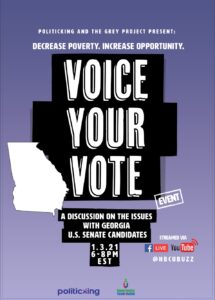
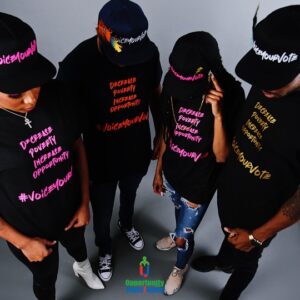

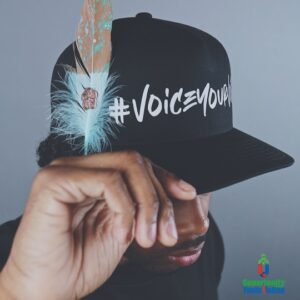
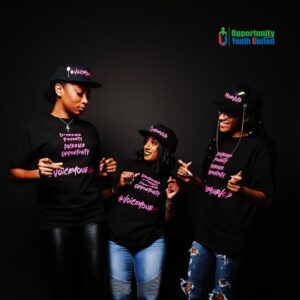
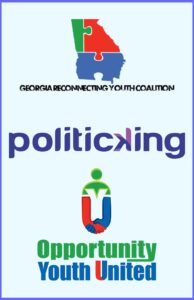
Coming Soon:
- Sacramento, California
- Columbus, Ohio
Sign-up for the Newsletter below.
Author, Shaquana Boykin
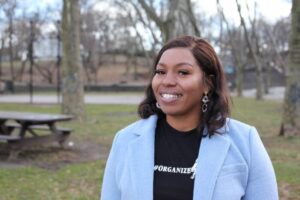
Opportunity Youth Need Support to Be Next Youth Workers, Advocates
/in Media Coverage /by Caitlin KBy Kisha Bird
This column was written for Youth Today, the national news source for youth-service professionals, including child welfare and juvenile justice, youth development and out-of-school-time programming.
“Here I was figuring out how to connect to resources. I was helping opportunity youth but didn’t do that for myself. I’m on a national stage and at the local level and was still dealing with some of the same systems that they were while being poor. That was really hard to navigate, cope with and transcend.”
—Shawnice Jackson
In my role of leading national youth policy conversations, something has been bothering me. These last few years, it has become a thorn in my side. Convening after convening, I have been seeing more and more youth participation and there are more young people sharing their stories.
This is a good thing, but I keep thinking, “Are we helping or hurting young people in these spaces?” When I say we, I mean the collective “we,” program leaders, youth policy advocates, agency leads and funders.
As a lifelong youth development professional, I have always questioned how young people are treated in certain spaces and how organizations show up in partnership with them. Perhaps this is bothering me because I am getting older or maybe it’s because I see myself in many of the young people who also sit on these national stages alongside me.
But I am not asked to constantly share my personal story and challenges in adolescence and young adulthood. People just accept that I am an “expert.” I wonder, as youth transition from being a program participant to an organizational, local, state and/or national leader, how are we, the collective we, supporting them? Not only in their exposure — flying them from this meeting and convening to the next — but also supporting their financial, social and emotional needs and dreams, in the here and now and long term.
I spoke to Shawnice Jackson, a leader in the national opportunity youth movement and native of Baltimore, to help me think about these questions. A graduate of Public Allies, she shared some of her thoughts and experiences with me.
Q: Tell me about your experience at Public Allies. What about the program contributed to your success then and now?
A:
- The idea of continuous learning and professional development
- Intentional support related to individual and work goals
- Weekly trainings on topics that support advancement in nonprofit careers, such as developing logic models, crafting elevator speeches
- Access to professional relationships, building social capital, expanding networks
- Income is not an add-on.
She noted that Public Allies’ monthly allowance was higher than the standard AmeriCorps living allowance. At the time, the AmeriCorps living allowance was around $12,000 for a year of service (approximately $500 every two weeks). Public Allies participants received about $1,500 a month for 10 months of service.
FROM PARTICIPANT TO LEADING A MOVEMENT
I asked Shawnice to speak to me about her transition from being a participant in a program to being on the national stage and leading a movement.
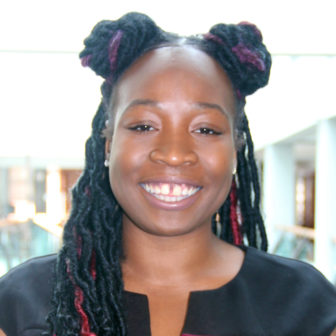
Shawnice Jackson
“It was really difficult. It reminded me of the Double Consciousness that W.E.B. DuBois spoke of in ‘The Souls of Black Folks’ over 100 years ago. I felt like I was constantly living in two worlds. I was consistently going back and forth between two different identities. I felt like I was working with opportunity youth while being branded as an opportunity youth. I was struggling with how I identified myself versus how others in the field perceived me.”
According to Hart’s Ladder of Children’s Participation, tokenism is “when young people appear to be given a voice, but in fact have little or no choice about what they do or how they participate.” We were constantly telling our stories, but we needed more support, including mental health spaces. She shared that since this kind of support was not there, they created these informal spaces for themselves.
Q: What has helped you on your leadership journey?
A: Building a supportive community through the Council. The National Council of Young Leaders (the Council) is Opportunity Youth United’s steering committee. Since 2012, they’ve represented opportunity youth in public gatherings all over the country. In addition, they have developed “Recommendations to Increase Opportunity and Decrease Poverty in America” and made decisive decisions regarding their organizational strategic direction and partnered with youth and anti-poverty organizations to advance policies and systemic solutions.
Q: What do we need to do differently?
A:
- Recognize where young people are in their leadership trajectory and where they are personally.
- Understand that many youth advocates, especially those that are former participants, are living paycheck to paycheck. Pay young people what they are worth. Invest into their professional development.
- At the most rudimentary level, ensure the most basic needs of young people are met and make sure young leaders aren’t in survival mode and have income for food, housing and transportation.
“Opportunity youth and former opportunity youth are still part of communities that are struggling,” Shawnice said. “Our families are struggling. We are struggling.”
Invest time in authentic relationships.
Shawnice shared a story with me about how one day, leaving an Aspen Forum for Community Solutions convening, one of the leaders in the movement sat with her and just asked how she was and what she wanted to do next: “I felt seen. If you don’t know who young people are at their core, you can’t help from an authentic space.”
In addition to what Shawnice shared, youth-focused organizations, public and private agencies, and policymakers should create intentional opportunities for former youth program participants through employment, fellowships and paid work experiences. Policy and direct service organizations alike should examine their human resource and hiring policies and develop career pathways into leadership positions.
I count it all joy to count Shawnice as part of my family and professional networks. I have learned so much from her over these past several years of being in partnership with the opportunity youth movement. Thank you, Shawnice, for taking time to share your journey and experiences with me and for your leadership in the field.
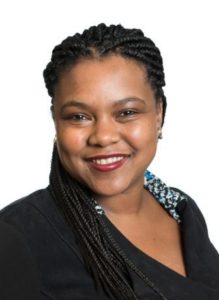
Kisha Bird is director of youth policy at the Center for Law and Social Policy and project director for the Campaign for Youth, a national coalition chaired by CLASP. Focusing on local and federal policy solutions, she works to expand access to education, employment and support services for low-income and opportunity youth, with a focus on young men and women of color.
Under the Radar, a New Generation of Community Leaders are Launching Nonprofits
/in Featured Articles, Media Coverage, OYU in Action /by Caitlin KBy David Abromowitz
A new generation of founders and leaders of community-based organizations is emerging. This cohort of former “opportunity youth” — young adults ages 16–24 from low-income communities who left school early and were not in the workforce — are building on their own experiences and channeling their energies into innovative approaches to uplift their communities.
Take Terry Green in Columbus, Ohio. In 2015, Terry founded Think Make Live, which evolved from a presentation he had made to a senior humanities class at The Ohio State University.
Reflecting on his own journey out of poverty, Terry saw the need for an organization that could help teens and young adults in Columbus understand how someone makes a meaningful change in their life. He knew how hard that could be from his own struggle to overcome challenges and barriers.
Terry’s barriers were particularly steep: From 2009 to 2013 while in his early twenties, he had been incarcerated in state prison. When asked recently about what led to him becoming justice involved, Terry explained: “I grew up in a family where my father wasn’t in my household and my mother was involved in drug dealing. I picked up off my mother’s drug dealing ways when she got incarcerated during my 10th grade year in high school…”
But Terry realized while incarcerated that he wanted a different path. He participated in the Inside-Out Prison Exchange, a pre-release program offered by The Ohio State’s sociology department. He was released early to a half-way house program, and from there found his way to the Franklin County YouthBuild program in Columbus. His experience in YouthBuild opened his eyes to an alternative future.
“I started to meet people whose parents had both gone to college, so for them college was the family business. Suddenly I went from feeling like I was on a one-lane highway with only one destination, to seeing an off-ramp,” he recalls.
Like any of the thousands of students annually enrolled in local YouthBuild programs in 45 states, Terry spent half his time back in the classroom to complete his education, and the other half gaining work skills by building affordable housing for low-income and homeless families in his community. There were opportunities to engage in service to his community, and an emphasis on leadership training.
“I had to start thinking of making positive changes within my actions and now I am truly living a changed lifestyle,” said Terry.
Experiencing the power of service in his own life, he set out to create Think Make Live to be primarily centered around providing youth workforce development opportunities, innovative leadership programs and civic engagement community outreach. But the framework goes well beyond traditional social service referrals — the philosophy Terry has honed to help people identify their daily challenges and create innovative solutions infuses Think Make Live. Their services are focused on prevention, intervention and empowerment through a cognitive behavioral therapeutic approach.
Terry is tackling more and more barriers through this approach, expanding the organization to provide innovative social justice consulting for companies and nonprofit organizations, including consulting on ways business can hire justice involved youth.
In addition, he is combining his local activism with the need for national advocacy on behalf of young adults from similar backgrounds. Terry is an elected member of the YouthBuild USA National Alumni Council, which involves national travel hosting civic engagement and YouthBuild alumni gatherings. In 2015, he received the YouthBuild USA Outstanding Commitment to Leadership and Social Justice Award. He is also a community leader for Opportunity Youth United, a national movement of young people and allies working to increase opportunities and decrease poverty in America.
At The Ohio State University Mershon Center, he participated in a panel with Michelle Alexander, author of The New Jim Crow: Mass Incarceration in the Age of Colorblindness. In 2017, Terry was the keynote speaker for the 7th Restored Citizen Summit in Ohio, and a featured presenter at the National Association of Attorneys’ General annual meeting.
Terry is hardly unique among young adults from opportunity youth backgrounds leading in their communities. In Troy, New York, Steve Figueroa has been a force behind team HERO (Helping Everyone Recognize Opportunities), a nonprofit mentoring “at risk” kids through education and service projects. HERO reaches out to those in need, working to keep young youth off the streets and provide them with a safe environment, even providing them dinner. “If I want to see a community a better place, I have to look at myself first then make a change,” says Steve about his approach to his work.
In Baltimore, Joni Holifield was inspired by the uprisings in her community after Freddie Gray’s death to found a nonprofit called Heartsmiles “that focuses on motivating, inspiring and empowering Baltimore’s Youth to reach for success and to dream big regardless of their circumstance.” Joni was raised in a single parent home that she describes as “the typical scenario of most poverty-stricken families.” Through her efforts at HeartSmiles, she says, “and those of other ordinary citizens, we will reclaim our city and put our young people on a path for long term success.”
Germain Castellanos started the SHINE Educational Leadership Program in the same Waukegan, Illinois, high school he was kicked out of. As Germain has described his own background: “Growing up amidst gang-related violence and drugs, I had a front-row view of poverty in the U.S. As a youth hanging out with the wrong crowd, I found myself on the wrong side of the law, but at the age of 21 had cleaned up my act — I was a part-time college student with a full-time manufacturing job and had a 1-year-old daughter. I understood that, along with the bad choices that I had made as a youth, poverty was the common denominator in my case and those of other youth with my background across the U.S.”
The SHINE program continues as a workforce development program, supporting high school seniors in their transition to college and career planning in a school where over 90% of students are first generation in their family to go to college.
Each of these young leaders — Terry, Steve, Joni and Germain — is tackling a particular set of challenges specific to their community. But what they have in common reflects a larger-scale trend among many who have grown up in poverty, found their way through a supportive setting that helped them make a change, and then dedicated themselves to serving the next generation behind them.
These local leaders are beginning to connect up through organizations like Opportunity Youth United, which describes itself as “a solutions-oriented movement of young adults who have experienced poverty and are dedicated to creating a society with opportunity and responsibility, love and respect, education and employment, justice and equality for all.” In just a few years, OYU has fostered in-community action teams, bringing together opportunity youth to identify the local issues affecting their lives, consider solutions, and organize around seeing those solutions implemented.
There, of course, have long been young leaders emerging from low-income communities who have created positive change, even if their work was not always noticed more widely. What may be different for this generation could result from a confluence of several factors.
Encouraging and supporting youth voice and leadership has been at the core of the YouthBuild model since its founding in 1978. But leadership training was, for many years, largely absent from other efforts and programs that offered education or work training to low-income young adults. In the last decade or two, however, the importance of treating all enrollees as future leaders has infused other programs working with opportunity youth, such as the Corps Network. Organizations dedicated to fostering leadership skills among youth from disadvantaged communities, such as the 25-year-old Public Allies, which “seeks to find and cultivate those leaders and connect them to the issues and causes that ignite their passion,” have matured and their influence spread. The leadership eco-system has grown richer.
A second factor might be the emergence of “social entrepreneurship” as a recognized and lauded career pathway. While pioneering organizations such as Ashoka have promoted the power of individuals to be change makers for decades, the term social entrepreneur only came into widespread use in the 2000s. Along with the concept becoming more widely known, support systems for encouraging social entrepreneurship have developed rapidly in the past 15 years, such as the work of Echoing Green which offers “unrestricted seed-stage funding and strategic foundational support … to emerging leaders working to bring about positive social change” and the BMe Community, which offers Social Entrepreneur Fellowships for Black men.
Another contributing factor may be the wider recognition that low-income young adults are community assets, captured by the growing use of the phrase opportunity youth. In decades past, youth who left high school without a diploma and were not working might be labeled negatively as dropouts, delinquents, at-risk or the milder “disconnected.” The term “opportunity youth” emphasizes the talent and potential of this cohort of nearly five million young adults in America today.
This reorientation in language is based on path-breaking research published in 2012 such as the Opportunity Road report by Civic Enterprises, and The Economic Value of Opportunity Youth by Clive Belfield, Henry Levin and Rachel Rosen. The Opportunity Youth Network was launched in 2013 “to capitalize on the momentum created by the White House Council on Community Solutions, which brought new visibility and focus to the needs of 16–24 year olds who are not in school and not working.” Opportunity Youth United is linking up many of current and future leaders, who are learning from each other’s experiences.
At a moment in our history when a Time Magazine 50-year retrospective on the original Kerner Commission report shows that “its haunting prediction about America becoming two societies, separate and unequal, is as relevant today as it was five decades ago,” these dedicated leaders offer a reason for hope.

David M. Abromowitz is the Chief Public Policy Officer of YouthBuild USA. David joined YouthBuild after many years as a director (principal) in the law firm Goulston & Storrs PC, where he most recently co-chaired the firm’s real estate group. David is also a Senior Fellow at the Center for American Progress in Washington DC, and serves on the Board of MassDevelopment, the economic development finance agency for Massachusetts. He is a Vice-Chair and board member of the National Housing & Rehabilitation Association, a co-founder of the Council for Energy Friendly Affordable Housing, and a past chair and founding member of both the Lawyers’ Clearinghouse on Affordable Housing and Homelessness and of the American Bar Association’s Forum Committee on Affordable Housing and Community Development.
David has been recognized by the Trailblazer award of the National Economic Development and Law Center of Oakland, California (2004), the Fair Housing Center of Boston’s Open Doors Award (2007), the “social capitalist” award of SCI Social Capital, Inc. (2008), the Distinguished Achievement Award of B’Nai B’rith Housing New England (2013), and the Vision Award of the National Housing & Rehabilitation Association (2014).
This article was originally published on Medium, Under the Radar, a New Generation of Community Leaders are Launching Non-profits, 1/2/2019
Our Response to Charlottesville
/in Media Coverage, OYU in Action /by varshabi_2o0imw
Our Response to Charlottesville
September 8, 2017
OYUnited E-Newsletter (Subscribe)
Introduction:
We recognize and are deeply moved by the profound tragedies of hurricanes Harvey and Irma, and the frightening announcement on the Deferred Action for Childhood Arrivals (DACA) program. The internal process of our Council’s reflections takes more time than the rapid cycle of tragedies in the news. We believe our collective response to the events in Charlottesville,Virginia, remains important to share with the members of Opportunity Youth United.
Our Response to Charlottesville:
“You don’t fight racism with racism; you fight it with solidarity.” (Fred Hampton)

The National Council of Young Leaders organized Opportunity Youth United in 2015 in order to mobilize Black, White, Native American, Latino/a, Asian, and mixed heritage young leaders of all religious faiths, genders, and sexual identities, from urban and rural communities. We come together and speak from the heart to pinpoint the problems. We envision a society with caring communities, opportunity and responsibility, love and justice, for all.
The ideologies of hate behind the white supremacist, white nationalist, and neo-Nazi groups who descended on Charlottesville are heart-breaking and horrifying to us. All of our elected officials including the President must be held accountable to speak out and join forces to end hate crimes, racism, anti-Semitism, and domestic terrorism.
We know the desire to belong to a caring community and to serve others is part of human nature. Only when people have been profoundly misinformed and hurt do they grow up to hate and harm others.
Physical violence flowing from the hate of white nationalists in Charlottesville resulted in injuries of 19 innocent people and the horrible murder through a deliberate car crash hitting the gentle and devoted Heather Heyer who was known for her deep caring for other human beings. We honor her.
We also honor and learn from our ancestors who stood up bravely giving their lives to fight injustice. “Darkness cannot drive out darkness; only light can do that. Hate cannot drive out hate; only love can do that.” (Dr. Martin Luther King, Jr.) James Reeb, the white Minister killed by white men with clubs for his support of African American civil rights in Selma in 1965, died in solidarity with black activists as did Heather Heyer, whose last Facebook post said, “If you’re not outraged you’re not paying attention.”
We never again want to see the sin of genocide committed against any group of people. Now is the moment for all Americans to stand in solidarity against hate in all forms. We urge all our members to act in your own communities. It is also a moment to keep each other safe from harm. The Southern Poverty Law Center (SPLC) published an excellent guide for individual and community response to hate, Ten Ways to Fight Hate: A Community Response Guide. This guide includes good advice about preserving your safety while taking visible action.
Opportunity Youth United is mobilizing young adults of all backgrounds who have lived through poverty, and their allies of all ages, to build the power to dramatically decrease poverty and increase opportunity. In 2014, only 11% of eligible 18 to 29 year old voters actually voted! Those who didn’t vote gave away their power. In various localities our Community Action Teams are driving campaigns focused on voter engagement (registration, education, and turnout), criminal justice reform, and access to employment. We want to get the issues of poverty and injustice as they affect all races onto the political agenda everywhere.
Get ready for National Voter Registration Day on September 26th! We will be mobilizing all our members. Go tell a friend to tell a friend to join you as a member of OYU at oyunited.org!
In solidarity,
Kimberly Pham and Jamiel Alexander
for the National Council of Young Leaders, Opportunity Youth United
The Latest on Youth Disconnection in America
/in Media Coverage /by varshabi_2o0imwThe Latest on Youth Disconnection in America
Through national and state reports, thematic briefs, and interactive websites, Measure of America aims to breathe life into numbers, using data to create compelling narratives that foster greater understanding of our shared challenges and greater support for people-centered policies. The Project was founded in 2006, and became an initiative of the Social Science Research Council (SSRC) in 2008. In addition, they provide easy-to-use yet methodologically sound tools for understanding the distribution of well-being and opportunity in America and stimulating fact-based dialogue about issues we all care about: health, education, and living standards.
Since the Measure of America first wrote about youth disconnection half a decade ago, public awareness of both the plight and the promise of young people who are not in either school or the workforce has grown by leaps and bounds. Support for alternative school-to-work pathways like apprenticeships and career-technical education have seen a resurgence, the business-led 100,000 Opportunities Initiative met its goal to hire 100,000 disconnected youth well ahead of schedule, and at the time of writing, the Opening Doors for Youth Act of 2016 was introduced in Congress to make available significant federal investment to reconnect young people to school and employment.
Thanks to a greatly improved economy and efforts like those described above, the country has made real progress in tackling this important issue; this is good news we should all celebrate. But challenges remain: 4.9 million young women and men are still disconnected from the educational and employment opportunities required for rewarding, productive lives. If all disconnected youth lived together in a single state, that state would have roughly the population of South Carolina or Colorado.
Promising Gains, Persistent Gaps: Youth Disconnection in America takes a look at who comprises this remaining group, what particular challenges they face, and what strategies have been shown to work.
Measure of America aims to breathe life into numbers, using data to foster understanding of our shared challenges and support for people-centered policies. They care about human development—the process of building people’s capabilities, improving their well-being, and expanding their opportunities to live freely chosen lives of value.
Young adulthood is when people develop many of the capabilities required to live a good life: knowledge and credentials, social skills and networks, a sense of mastery and agency, an understanding of one’s strengths and preferences, and the ability to handle stressful events and regulate one’s emotions, to name just a few. Measure of America is thus concerned with youth disconnection because it impedes human development, closing off some of life’s most rewarding and joyful paths and leading to a future of limited horizons.
Disconnected youth are young people between the ages of 16 and 24 who are not in school and not working. The youth disconnection rate tells us a lot about the opportunities available to teens and young adults from different racial and ethnic groups and in different parts of the country. Understanding who disconnected youth are, the challenges they face, and where they live is the first step to helping them. Doing so is critical for all of us. Youth disconnection’s harms accrue not only to young people themselves, but also to society at large. Society pays a price in terms of reduced competitiveness, lower tax revenues, and higher health, social services, and criminal justice costs, to name just a few.
First, the good news: the national youth disconnection rate is falling! Fewer young people are cut off from school and work today than were before the Great Recession. The rate dropped 16 percent over five years, from 14.7 in 2010 in the aftermath of the Great Recession to 12.3 percent in 2015. This translates to roughly 900,000 fewer young people cut off from pathways that lead to independent, rewarding adulthoods.
Now, the bad news: youth disconnection is still a serious problem, with 4.9 million young Americans neither working nor in school. The gaps between racial and ethnic groups remain large; Native American, black, and Latino young people face higher disconnection rates than whites and Asian Americans at every income level. Place matters, too: the average disconnection rate in rural areas is much higher than in urban and suburban areas, and states, cities, and rural counties in the south tend to have higher rates than those in the north.
The maps and graphs on the interactive web page allow you to explore the latest youth disconnection data for yourself. What’s happening in your county? How are different racial and ethnic groups faring in your state? Which places are doing the best, and which ones are doing the worst? Are things getting better, and for whom? Find out!
If you want to understand more about youth disconnection, read Measure of America’s latest report, Promising Gains, Persistent Gaps: Youth Disconnection in America.
###
LAUNCHED MARCH 8, 2017 | MEDIA RELEASE
Learn more:
- Read the latest brief with NEW DATA on Congressional districts here.
- Check out the white paper on youth disconnection in Chicago, from Measure of America and LeadersUp.
- Promising Gains, Persistent Gaps
About Us
Opportunity Youth United is a national movement of young people and allies working to increase opportunity and decrease poverty in America. It is supported by many sponsors, partners, and funders.
